14 Nights / 15 Days
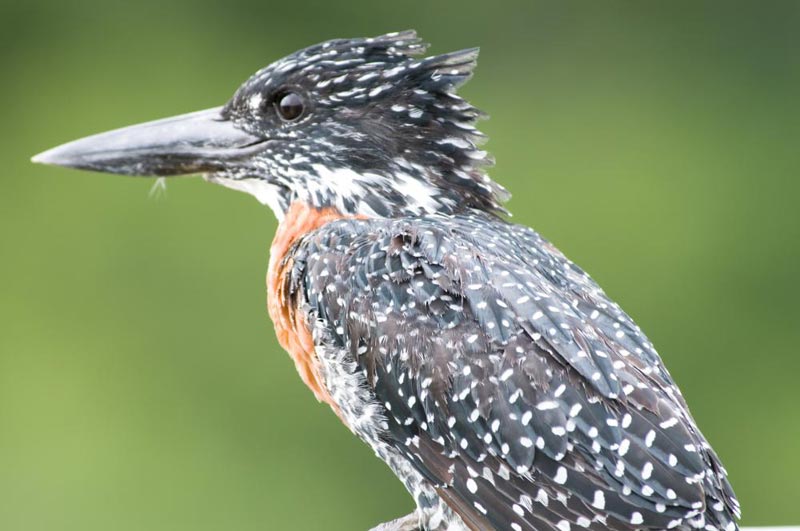
This specialist birding and wildlife tour departs from Maun, travelling overland in a 4x4 vehicle to Moremi Game Reserve in the Okavango Delta, Khwai River, Savuti & Chobe. Sleep overnight in mobile en-suite Meru-style tents, with beds. Then finish your holiday relaxing at Victoria Falls. English speaking birding & wildlife guide, all transfers & game viewing included. Min 2 / max 7. Specified departures.
HIGHLIGHTS
• Maun • Moremi Game Reserve • Okavango Delta • Bird Watching
• Khwai River • Savuti Plains • Game Drives • Chobe River
• Victoria Falls • Zambezi Cruise
You will be met at Maun Airport and transferred to your lodge near this small town, which is the gateway to the famous Okavango Delta.
Check into your lodge where you can relax and enjoy the birdlife of the region.
This morning your guide will collect you at 08.00 and transfer you 3-hours to Moremi Game Reserve, situated on the eastern side of the famous Okavango Delta.
Within an hour of leaving Maun, it is possible to view the first of the wildlife inhabiting this unspoilt region. Check into your comfortable en-suite tented camp in the Xakanaxa region Settle in and relax in this pristine conservation area that offers superb land-based game viewing and outstanding birding. All tents will be pre-erected, with beds and linen provided, as well as three delicious meals a day.
Essential Requirements: A head torch is essential, as lighting in the tents is dimmer than at home. Also binoculars, ideally one set per person as it can be very frustrating to share.
Wildlife: Every type of mopane habitat is well represented in our drive today, from the towering cathedral woodlands of Xakanaxa to classic climax mopane woodlands, and in the drier and harsher habitats extensive stretches of scrub mopane. The San-ta-Wani region has scattered ephemeral water pans with large floodplains and camel-thorn woodlands. 25 miles (40 km) of our drive is in Moremi Game Reserve with a further 25 miles (40 km) in wildlife management areas where animals roam freely.
Birding (*migratory species): A good day for raptors with African Hawk-Eagle, Gabar Goshawk, Shikra, Little Sparrowhawk, Dark Chanting Goshawk, Tawny Eagle, Lesser Spotted Eagle* and Steppe Eagle* all inhabiting the mopane and adjacent woodlands. Other birds common along this route includes most of Botswana’s hornbills including Red-billed, Southern Yellow-billed, African Grey, Bradfield’s and the Southern Ground Hornbills. A large number of brood-parasites may also be seen. Diederick Cuckoo*, Levaillant’s Cuckoo*, Jacobin Cuckoo*, Great-spotted Cuckoo*, African Cuckoo*, Common Cuckoo*, Shaft-tailed Whydah, Pin-tailed Whydah, Eastern Paradise Whydah, Greater Honeyguide, and Lesser Honeyguide.
The seasonal Okavango Delta is flooded annually by the great Okavango River, whose waters flow inland from Angola into the vast Kalahari – never finding the sea, but instead forming a great inland delta whose waters are absorbed by the desert.
Comprising 6,000 square miles of crystal clear channels, serene lagoons and a myriad of islands, the Okavango Delta forms a natural oasis that sustains a vast variety of wildlife and birds of all descriptions. The waters are at their height from July to October, forming an amazing wetlands ecosystem that is one of the greatest natural wonders of the world.
Activities centre on early morning and late afternoon game viewing and bird watching, with over 240 different bird species. Depending on the season, mekoro excursions may be available as well as game drives to track some of the larger species that inhabit this region - including buffalo, hippo and elephants. In the evening relax around a blazing fire under balmy African skies.
Habitat: Moremi lies on the eastern extremity of the Okavango Delta. Habitats here range from wide-open floodplains, marshes, lagoons, papyrus fringed channels, vast stands of Miscanthus and Phragmites, woodland and savannah. As a result of the extremely variable habitat the diversity of both wildlife and birdlife is excellent.
Wildlife: Moremi is amongst the best game reserves in Africa for viewing the endangered African wild dog. Xakanaxa is home to a resident herd of several hundred buffalo whose range covers the territories of at least 4 prides of lion, which are often seen flanking the ever moving herd. Breeding herds of elephant move between their browsing areas in the mopane forests and the fresh water of the Okavango. Red lechwe are one of the more unusual antelope species and commonly found here.
Birding (*migratory species): The swampy areas of Xakanaxa are home to African Rail, Coppery-tailed Coucal, Black Coucal*, Red-chested Flufftail, African Crake*, Black Crake, Chirping Cisticola, Luapula Cisticola, Purple Swamphen, Allen’s Gallinule to name but a few. The open waters attract African Skimmer, Saddle-billed Stork, Yellow-billed Stork, Intermediate Egret, Goliath Heron, African Fish Eagle as well as the globally threatened Slaty Egret and Wattled Crane.
The seasonal Okavango Delta is flooded annually by the great Okavango River, whose waters flow inland from Angola into the vast Kalahari – never finding the sea, but instead forming a great inland delta whose waters are absorbed by the desert.
Comprising 6,000 square miles of crystal clear channels, serene lagoons and a myriad of islands, the Okavango Delta forms a natural oasis that sustains a vast variety of wildlife and birds of all descriptions. The waters are at their height from July to October, forming an amazing wetlands ecosystem that is one of the greatest natural wonders of the world.
Activities centre on early morning and late afternoon game viewing and bird watching, with over 240 different bird species. Depending on the season, mekoro excursions may be available as well as game drives to track some of the larger species that inhabit this region - including buffalo, hippo and elephants. In the evening relax around a blazing fire under balmy African skies.
Habitat: Moremi lies on the eastern extremity of the Okavango Delta. Habitats here range from wide-open floodplains, marshes, lagoons, papyrus fringed channels, vast stands of Miscanthus and Phragmites, woodland and savannah. As a result of the extremely variable habitat the diversity of both wildlife and birdlife is excellent.
Wildlife: Moremi is amongst the best game reserves in Africa for viewing the endangered African wild dog. Xakanaxa is home to a resident herd of several hundred buffalo whose range covers the territories of at least 4 prides of lion, which are often seen flanking the ever moving herd. Breeding herds of elephant move between their browsing areas in the mopane forests and the fresh water of the Okavango. Red lechwe are one of the more unusual antelope species and commonly found here.
Birding (*migratory species): The swampy areas of Xakanaxa are home to African Rail, Coppery-tailed Coucal, Black Coucal*, Red-chested Flufftail, African Crake*, Black Crake, Chirping Cisticola, Luapula Cisticola, Purple Swamphen, Allen’s Gallinule to name but a few. The open waters attract African Skimmer, Saddle-billed Stork, Yellow-billed Stork, Intermediate Egret, Goliath Heron, African Fish Eagle as well as the globally threatened Slaty Egret and Wattled Crane.
Today we continue to explore the vast Moremi Game Reserve, as we travel to our next campsite on the banks of the Khwai River.
Enjoy superb game viewing and birding all day in this amazing wildlife sanctuary, where animals migrate freely across huge distances.
Habitat: The Manuchira Channel is known as the Khwai River at its eastern most extremity. The day’s journey follows this water course, with the track weaving from the riverside and floodplains into the mopane veld and the woodlands that make Khwai one of the most scenic areas of the Okavango. We pass the magnificent Dombo Hippo Pools in the morning, stopping to enjoy the scenery and the antics of the resident hippo.
Wildlife: The western mopane veld is home to mostly breeding herds of elephant whilst the eastern reaches of Khwai is home to some impressive old bulls. The mature bulls revel in the cool waters of the Khwai and are far more approachable while drinking and bathing than the breeding herds. The river has an unusually high density of hippo as well as some huge crocodile. Leopard, cheetah, serval and lion are common predators along this route and both Xakanaxa as well as Khwai are included in the home ranges of 2 different packs of wild dog. General game includes southern giraffe, Burchell’s zebra, tessebe and red lechwe with roan and sable antelope being less common residents.
Birding (*migratory species): In the mopane woodlands African Hawk-Eagle, Tawny Eagle, Gabar Goshawk, Little Sparrowhawk, African Harrier Hawk and Shikra are common raptors. Mixed bird parties move through the canopy and include Red-headed Weaver, Stierling’s Wren-Warbler, Scarlet-chested Sunbird, Neddicky, Yellow-breasted Apalis, Chin-spot Batis, Diederik Cuckoo* to name but a few. The verges of the swamp form breeding grounds for the Rosy-Longclaw, Black Coucal*, Long-legged Bustard and the African Crake*.
The Khwai River forms the northern border between Moremi Game Reserve and the Khwai community area. The large floodplains here provide good grazing for many species of antelope and unobstructed seasonal movement of wildlife.
Rise early, with coffee and biscuits at first light, to search for predators such as lion, leopard, cheetah, wild dog and hyena. Also antelope such as impala, lechwe, reedbuck and tsessebe and other game such as elephant, buffalo, giraffe and zebra.
We will also have the opportunity to explore the surrounding wilderness on foot and mokoro and enjoy an up close and personal encounter with Botswana’s flora and fauna. Exploring after dark with spotlights offers you an opportunity to experience some of the nocturnal animals that are rarely encountered during the day.
It is important to note that night drives and guided walks are not permitted within the national parks and reserves. These activities are conducted outside the boundaries of the Moremi Game Reserve in the Khwai community area.
Habitat: We spend our time between the dry-land habitats of the lead-wood and camel-thorn woodlands and savannahs and the riverside and marshy back-waters of the Khwai. Time permitting we may visit the lagoons and waterways of Xakanaxa where the largest heronry in southern Africa exists.
Wildlife: The Khwai region boasts excellent populations of both bull elephant as well as breeding herds. Lion, leopard, serval and African wildcat are common predators of the region with wild dog and cheetah being less common. Buffalo use this area seasonally with large herds moving in during the summer rains. The swampy areas in the west are home to red lechwe. Other ungulates include tsesebe, blue wildebeest, giraffe, kudu, sable antelope, roan antelope and impala.
Birding (*migratory species): Truly one of Botswana birding Mecca’s. The western reaches are prime habitat for the uncommon Rosy-throated Longclaw. The entire length of the river is hunting domain for the Bat-Hawk. Other interesting raptors here are Cuckoo Hawk (rare), Long-crested Eagle and Black Sparrowhawk. More commonly Tawny Eagle, Steppe Eagle*, Lesser-spotted Eagle*, Martial Eagle, Bateleur and African Hawk-Eagle. The waterways host Africa Rail, African Crake*, Greater Painted Snipe, Allen’s Gallinule*, Lesser Jacana and Lesser Moorhen.
The Khwai River forms the northern border between Moremi Game Reserve and the Khwai community area. The large floodplains here provide good grazing for many species of antelope and unobstructed seasonal movement of wildlife.
Rise early, with coffee and biscuits at first light, to search for predators such as lion, leopard, cheetah, wild dog and hyena. Also antelope such as impala, lechwe, reedbuck and tsessebe and other game such as elephant, buffalo, giraffe and zebra.
We will also have the opportunity to explore the surrounding wilderness on foot and mokoro and enjoy an up close and personal encounter with Botswana’s flora and fauna. Exploring after dark with spotlights offers you an opportunity to experience some of the nocturnal animals that are rarely encountered during the day.
It is important to note that night drives and guided walks are not permitted within the national parks and reserves. These activities are conducted outside the boundaries of the Moremi Game Reserve in the Khwai community area.
Habitat: We spend our time between the dry-land habitats of the lead-wood and camel-thorn woodlands and savannahs and the riverside and marshy back-waters of the Khwai. Time permitting we may visit the lagoons and waterways of Xakanaxa where the largest heronry in southern Africa exists.
Wildlife: The Khwai region boasts excellent populations of both bull elephant as well as breeding herds. Lion, leopard, serval and African wildcat are common predators of the region with wild dog and cheetah being less common. Buffalo use this area seasonally with large herds moving in during the summer rains. The swampy areas in the west are home to red lechwe. Other ungulates include tsesebe, blue wildebeest, giraffe, kudu, sable antelope, roan antelope and impala.
Birding (*migratory species): Truly one of Botswana birding Mecca’s. The western reaches are prime habitat for the uncommon Rosy-throated Longclaw. The entire length of the river is hunting domain for the Bat-Hawk. Other interesting raptors here are Cuckoo Hawk (rare), Long-crested Eagle and Black Sparrowhawk. More commonly Tawny Eagle, Steppe Eagle*, Lesser-spotted Eagle*, Martial Eagle, Bateleur and African Hawk-Eagle. The waterways host Africa Rail, African Crake*, Greater Painted Snipe, Allen’s Gallinule*, Lesser Jacana and Lesser Moorhen.
Today is one long game drive as we travel from Khwai River on sandy roads suitable only for 4x4 vehicles the Savuti region of Chobe Game Reserve – Botswana’s premier game park.
With open savanna and camelthorn trees, these desert-like landscapes offer world-acclaimed game viewing – including the famous Savute lion prides, leopard, wild dogs, bull elephants, black-backed jackal, bat-eared foxes, hyena, cheetah, tsessebe, kudu, impala, ostrich and much more.
Habitat: A fascinating day's drive looking at some of the evidence of the Paleo-Lake Makgadikgadi that dried up some ten thousand years ago. The most challenging part of the trip is crossing the Magwikwe sand-ridge that formed the shoreline for this massive inland sea. The winding track through this deep sand makes for interesting travel in the early summer! The old lake bed is now the Mababe Depression. The dense clay floor of the depression result in high protein feed for wildlife and the area teams with game after the rains. During the rainy season the depression is impassable due to the “cotton soil” and alternative routes must be used.
Wildlife: A day when anything could happen. The range of habitat that is covered encompasses most of the habitat types of northern Botswana. We pass through excellent lion country and some of the best cheetah country that our safari will cover. Elephant occur throughout the drive but are more common at the start and end of the drive where permanent surface water can be found.
Birding (*migratory species): The Mababe Depression is a birder’s paradise. The nutritious grasses that grow on the rich soils provide excellent seed for an impressive array of estrillids and viduids. Among these are the magnificently coloured Violet-eared Waxbill, Black-cheeked Waxbill, Village Indigobird, Shaft-tailed Whydah and Paradise Whydah. These in turn provide a good food source for small raptors such as the Little Sparrowhawk, Shikra, Gabar Goshawk, Red-necked Falcon and Lanner Falcon. It is not only the small birds that feed on the grass seeds, but rodents too. There are annual outbreaks of huge numbers of rats and mice. As a result huge numbers of Secretary Bird, Tawny Eagle, Black-shouldered Kite, Steppe Eagle*, Lesser-spotted Eagle*, Wahlberg’s Eagle* and Steppe Buzzard* can be found.
The Savuti Plains offer more outstanding widlife viewing in Chobe Game Reserve today.
The summer rains bring a feast for lion, hyena and cheetah, as migrating zebra and wildebeest assemble in a chaotic pattern on the marsh. Cape buffalo herds arrive and migrant birds swell the resident population of over 300 different species, making this a bird watchers delight. Carmine bee-eaters perch on the back of kori bustards, red-crested korhaans plummet from the sky in daring mating displays and marabou stork roost in the trees whilst woodland kingfishers sing you to sleep.
Enjoy morning and afternoon game drives in the wilderness that is Botswana.
Habitat: Unlike the vast majority of the country, Central Chobe is not a totally flat landscape. Large outcrops of volcanic rock reach up out of the Kalahari sands, towering over the endless savannah. These hills provide habitat for a completely different array of small wildlife, birds and plants. The Savuti Marsh has been the stage for many of the most dramatic wildlife documentaries in Africa. The wide open country, good ungulate populations and particularly strong prides of lion and hyaena clans make for dramatic wildlife interaction and excellent viewing opportunities. The now dry Savuti Channel runs through this landscape linking the dry sand-veld, the waterholes, the hills and the grassland that was the Savuti Marsh.
Wildlife: Undoubtedly it is the interaction between lion and elephant that is the most interesting aspect of Savuti. The area is inhabited by a huge pride of lions with numbers fluctuating from 20-30 members. These remarkable lion have learned over the years how to hunt these massive pachyderms that are supposedly above predation. Launching their attack under darkness and using their numbers, they manage to kill adolescent and even young adult elephant. The marsh is prime cheetah country and in the wet season it is not unusual to have the wild dog hunting here in Central Chobe.
Birding (*migratory species): The surface water that is pumped by the Government here provides a major attraction for birdlife. In the dry season thousands of dove and sandgrouse come down to drink in the mornings and are under constant surveillance by Yellow-billed Kite*, Tawny Eagle and African Hawk-Eagle. Red-crested Korhaan are common in the Kalahari Apple-leaf veld. The marsh is the summer home for good numbers of Caspian Plover* and Montague’s Harrier* as well as Chestnut-backed Sparrowlark, Grey-backed Sparrowlark, Northern Black Korhaan, Rufous-naped Lark, African Pipit and Desert Cisticola. Dickenson’s Kestrel, Amur Falcon* and Red-necked Falcon are found along the perimeter of the marsh.
The Savuti Plains offer more outstanding widlife viewing in Chobe Game Reserve today.
The summer rains bring a feast for lion, hyena and cheetah, as migrating zebra and wildebeest assemble in a chaotic pattern on the marsh. Cape buffalo herds arrive and migrant birds swell the resident population of over 300 different species, making this a bird watchers delight. Carmine bee-eaters perch on the back of kori bustards, red-crested korhaans plummet from the sky in daring mating displays and marabou stork roost in the trees whilst woodland kingfishers sing you to sleep.
Enjoy morning and afternoon game drives in the wilderness that is Botswana.
Habitat: Unlike the vast majority of the country, Central Chobe is not a totally flat landscape. Large outcrops of volcanic rock reach up out of the Kalahari sands, towering over the endless savannah. These hills provide habitat for a completely different array of small wildlife, birds and plants. The Savuti Marsh has been the stage for many of the most dramatic wildlife documentaries in Africa. The wide open country, good ungulate populations and particularly strong prides of lion and hyaena clans make for dramatic wildlife interaction and excellent viewing opportunities. The now dry Savuti Channel runs through this landscape linking the dry sand-veld, the waterholes, the hills and the grassland that was the Savuti Marsh.
Wildlife: Undoubtedly it is the interaction between lion and elephant that is the most interesting aspect of Savuti. The area is inhabited by a huge pride of lions with numbers fluctuating from 20-30 members. These remarkable lion have learned over the years how to hunt these massive pachyderms that are supposedly above predation. Launching their attack under darkness and using their numbers, they manage to kill adolescent and even young adult elephant. The marsh is prime cheetah country and in the wet season it is not unusual to have the wild dog hunting here in Central Chobe.
Birding (*migratory species): The surface water that is pumped by the Government here provides a major attraction for birdlife. In the dry season thousands of dove and sandgrouse come down to drink in the mornings and are under constant surveillance by Yellow-billed Kite*, Tawny Eagle and African Hawk-Eagle. Red-crested Korhaan are common in the Kalahari Apple-leaf veld. The marsh is the summer home for good numbers of Caspian Plover* and Montague’s Harrier* as well as Chestnut-backed Sparrowlark, Grey-backed Sparrowlark, Northern Black Korhaan, Rufous-naped Lark, African Pipit and Desert Cisticola. Dickenson’s Kestrel, Amur Falcon* and Red-necked Falcon are found along the perimeter of the marsh.
Today we continue northwards travelling for 5-hours on the 4x4 road through Chobe National Park towards Kasane, uniquely situated at the confluence of the Zambezi and Chobe Rivers where four African countries meet – Botswana, Namibia, Zimbabwe and Zambia.
On arrival relax surrounded by vast endless landscapes, open plains, baobab trees and the abundant river-based wildlife of the Chobe River.
Habitat: The habitat on today’s drive takes us through the stunted mopane scrub of the Goha clay basin, across the sand-ridge and through the wonderful Zambezi teak woodlands of the Chobe Forest Reserve and along the Chobe River itself. The Chobe floodplain is tens of kilometers wide and in years of exceptional rains the water stretches as far as the eye can see.
Wildlife: While there are community areas that we pass through that are settled by local tribes, for the vast majority of the day’s drive we pass through wild country where wildlife moves un-inhibited by fences or man. Roan and sable antelope thrive in the teak woodlands where the low density of predators and lack of competition for food by other ungulates makes this prime habitat for these large ungulates. Leopard occur in these woodlands in low numbers but they are highly secretive and seldom seen. The Goha region has natural waterholes that hold water well into the dry season and herds of buffalo, Burchell’s zebra, greater kudu and elephant come down to drink.
Birding (*migratory species): The most unusual species are to be found in the teak (Baikea plurijuga) woodlands. This broad-leafed woodland, or miombo as it is locally known, provides good pickings for insectivorous birds that favour canopy habitat. Grey Tit-Flycatcher, Ashy Flycatcher, Paradise Flycatcher, Pallid Flycatcher, Scarlet-chested Sunbird, Amethyst Sunbird, Yellow-throated Petronia, Red-headed Weaver and Violet-backed Starling are only some of the species that move around in the “bird parties” in the canopy. Dickenson’s Kestrel, Red-necked Falcon, Peregrine Falcon* and Lizard Buzzard are some of the raptors to keep an eye out for, while the diminutive White-faced Owl can often be seen roosting in the road-side vegetation. Flappet Lark, Fawn-coloured Lark, Dusky Lark*, Olive-Tree Warbler* and Neddicky are species more likely to be enjoyed by the birding enthusiast.
Rise early to take advantage of the best game viewing conditions of the day and enjoy thrilling game viewing in the great Chobe National Park.
Chobe is home to vast herds of buffalo and elephant, as well as numerous other species which roam in profusion and diversity. During the dry season, vast elephant herds migrate from both south and north to congregate in their thousands along the Chobe River – the largest concentration of elephants in the whole of Africa! Also hope to see lion, leopard, cheetah, giraffe, hippo, kudu, crocodiles, antelope, waterbuck, warthogs, baboons and many other interesting animals before returning to your lodge.
After a beautiful African sunset, enjoy the balmy evening and pristine stars of the Milky Way as you have never seen them before – as well as the spectacular Southern Cross.
Habitat: The Chobe River is presided over by an impressive sand-ridge. Along this sand-ridge broad-leafed woodland is the dominant vegetation. As you move into the valley the impact of the high elephant population is felt with the paucity of large trees that typically line the rivers of sub-tropical Africa and the dense tangled masses of knobbly combretum Combretum mosambicense and wooly caper bush Capparis tomentosa that appear impervious to the constant onslaught of browsers. The river itself is broad and meandering and in the flood season it is an impressive sight. To the east, outside of the park lie the riparian forests that are home to so many of the more tropical species whose ranges end abruptly in north-eastern Botswana.
Wildlife: Much of the Chobe’s wildlife come to drink in the latter half of the morning and early afternoon when the heat excites their thirst. This is one of the best places to see roan and sable antelope. Breeding herds of elephant seem to be around every corner here in the dry season and the massive herds of buffalo are constantly flanked by the ever-hungry lions of the Chobe. This is one of the highest lion densities of any National Park or Game Reserve in southern Africa. Puku antelope occur nowhere else in southern Africa except here on the Chobe floodplains. With the diminishing woodlands and thickets the magnificent Chobe bushbuck is becoming ever-more scarce. The western Chobe supports strong herds of Burchell’s zebra.
Birding (*migratory species): Bat-Hawk, Cuckoo Hawk, Eurasian Hobby Falcon* and Ovambo Sparrowhawk are some of the more interesting raptors. Corncrake*, African Crake*, African Rail, Luapula Cisticola, Malachite Kingfisher, Quail Finch and Rosy-throated Longclaw are found on the edges of the floodplain. Large flocks of Great White Pelican investigate the drying pools as the floodwaters recede. Much larger flocks of the nomadic Red-winged Pratincole and also Black-winged Pratincole, numbering in their thousands, can be found on the drying floodplains. The woodlands support Racket-tailed Roller, Stierlings Wren-Warbler, Tree Pipit* and Miombo Rock-Thrush.
This morning enjoy a game viewing boat ride on the Chobe River.
Afterwards transfer to Kasane on the Zimbabwe border. After completing border formalities, connect with your 2-hour shared transfer to your hotel near Victoria Falls on the mighty Zambezi River.
Check in, settle in and relax whilst you catch your first glimpses of the magnificent Smoke That Thunders first discovered by Dr. David Livingstone and still one of the greatest natural wonders of the world. The flow of water over the Victoria Falls is greatest from February to June following the summer rains, but they are a magnificent sight at any time of year.
Today we recommend exploring on foot the mighty Victoria Falls and its rainforest, which offers magnificent views.
Afterwards you can participate in other optional activities such as a helicopter flight over the falls or an elephant interaction.
In the late afternoon we recommend an optional Sunset Cruise on the Zambezi River where you may see hippos, crocodiles and abundant bird life.
Note: We suggest you take your own raincoat for walking in the rainforest, as those on hire are well used.
Transfer to Victoria Falls Airport for your flight home.
| No of pax | Age Limit | Price per pax (Rs) |
|---|---|---|
| Adult | Above 12 years | $ 5049 / Adult |
Our company base is in Ancient Olympia the most historical place in Greece.My name is Theodoros Mamousis. Read More...
 11D/10N
11D/10N
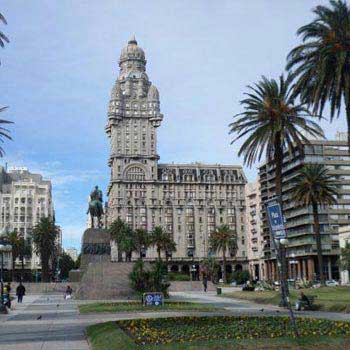 13D/12N
13D/12N
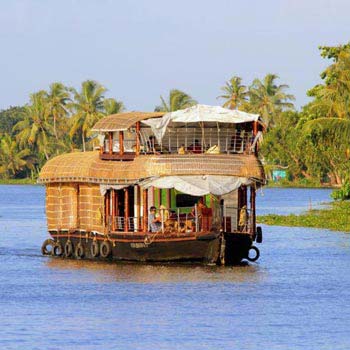 15D/14N
15D/14N
Best Of India: Golden Triangle & Kerala ..
New Delhi - Agra - Jaipur - Kovalam - Kochi - Alleppey
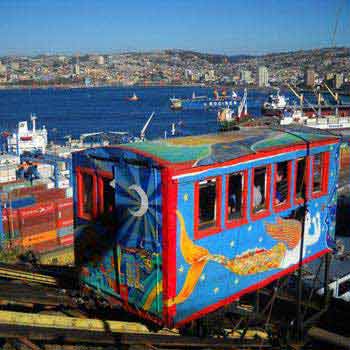 13D/12N
13D/12N
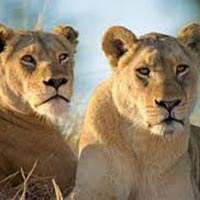 11D/10N
11D/10N
 14D/13N
14D/13N
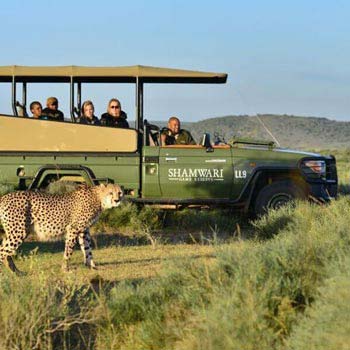 10D/9N
10D/9N
 13D/12N
13D/12N
 11D/10N
11D/10N
 15D/14N
15D/14N
New Delhi - Agra - Gwalior - Bhopal - Indore - Mumbai - Tikamgarh - Chhatarpur - Au..
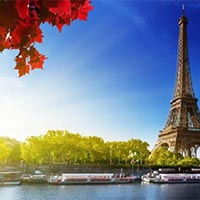 15D/14N
15D/14N
Rome - Pisa - Lucerne - Paris - Brussels - Amsterdam - London - Innsbruck - Vatican..
 15D/14N
15D/14N
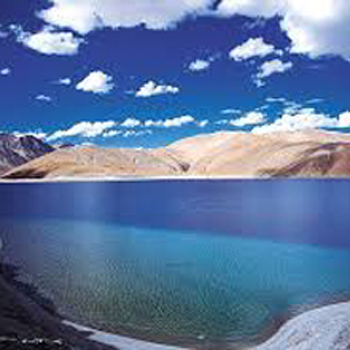 15D/14N
15D/14N
 15D/14N
15D/14N
Chandigarh - Shimla - Manali - Dalhousie - Amritsar - Dharamshala
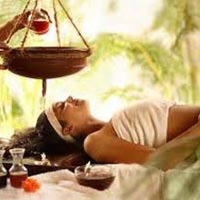 15D/14N
15D/14N
New Delhi - Haridwar - Rishikesh - Shivpuri - Agra - Jaipur
 15D/14N
15D/14N
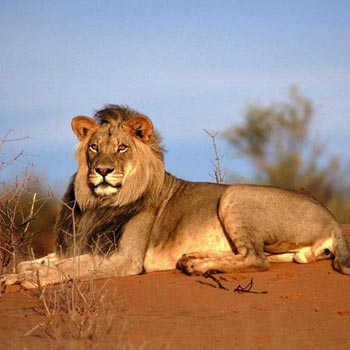 15D/14N
15D/14N
 15D/14N
15D/14N
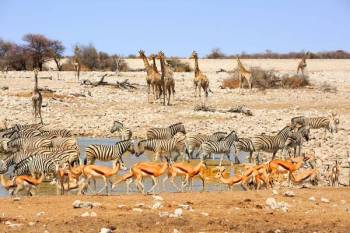 16D/15N
16D/15N
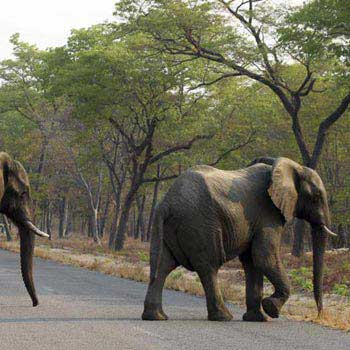 9D/8N
9D/8N
 7D/6N
7D/6N
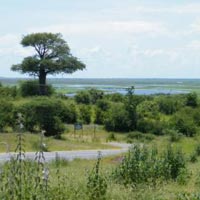 5D/4N
5D/4N
 8D/7N
8D/7N
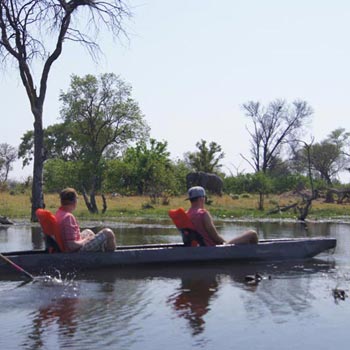 10D/9N
10D/9N
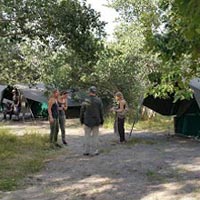 3D/2N
3D/2N
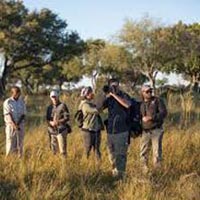 7D/6N
7D/6N
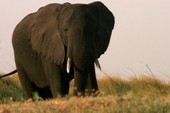 5D/4N
5D/4N